The Enigmatic Celebration of Walpurgis Night
Walpurgis Night, or Walpurgisnacht, marks a pivotal juncture in the calendar where winter’s cold veil lifts to herald the coming of spring. Celebrated across central and northern Europe, it finds a particular stronghold in Germany’s Harz Mountains—a mystical region steeped in lore and legend. Known as the eve of May, this night dances on the thin line between seasons and beliefs, merging Christian and pagan traditions in a spectacle that illuminates the night with bonfires and revelry.
On this night, as the clock winds toward the first of May, the air in the Harz Mountains thickens with tales of witchcraft and ancient rites. Locals and visitors alike are drawn to the shadow of the Brocken, the highest peak, where legend has it that witches convene to celebrate the arrival of spring. This festival is not merely a nod to the historical Saint Walpurga but has evolved into a vital cultural touchstone, reflecting centuries-old customs that continue to captivate those fascinated by folklore and pagan practices.
Walpurgisnacht thus serves as a vibrant legacy to the enduring power of myth and tradition, a beacon for anyone entranced by the mystic past and the rhythmic cycles of nature. It’s a night that promises magic, a glimpse of the supernatural, and a connection to the ancient world that still resonates deeply with modern pagans and enthusiasts of folklore.
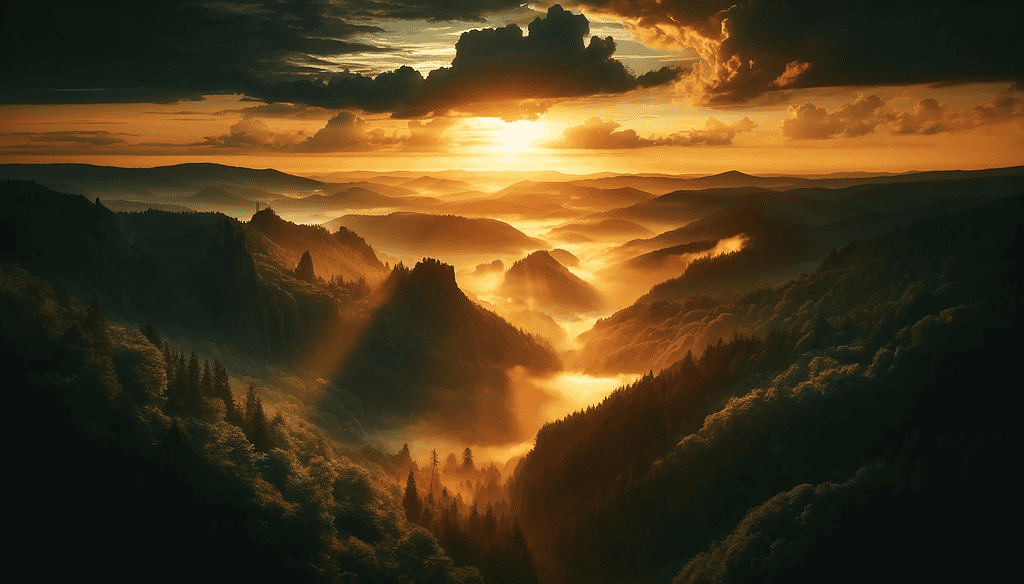
Table of Contents
Unveiling Walpurgis Night – Definitions and Historical Roots
Origins and Definitions
Walpurgis Night, celebrated as the eve of May, is both an ancient and mysterious festival with deep roots in European folklore. Known in German as Walpurgisnacht, this occasion traditionally marks the transition from winter to spring, infused with both pagan and Christian significances. It is closely linked with the feast day of Saint Walpurga, an 8th-century abbess in Francia, whose canonization on May 1st became intertwined with older beliefs in magic and the supernatural.
Saint Walpurga and Her Legacy
Saint Walpurga was venerated for her piety and miraculous powers, believed to ward off evil spirits and diseases. As Christianity spread through Europe, the eve of her feast day coincidentally aligned with older pagan customs that celebrated the end of winter and the fertility of spring. This fusion of traditions has led to Walpurgis Night being a colorful tapestry of cultural heritage, reflecting a melding of ancient rituals with Christian celebrations.
Medieval Perceptions and Evolution
Medieval accounts of Walpurgis Night often depict a night filled with supernatural happenings. Literature and folklore from the period describe how locals believed that witches and spirits would gather on the Harz Mountains, particularly around the Brocken peak, engaging in revelries that defied Christian norms. These gatherings were said to culminate in the witches’ Sabbath, an event steeped in mysticism and fear during the medieval era.
By the 19th century, these narratives had evolved significantly. The burgeoning interest in folklore during this period led to a reimagined Walpurgis Night that was less about fear and more about celebrating community and continuity. Folk songs, dances, and the lighting of bonfires became common, transforming this night into a festive community event, albeit one still wrapped in the cloak of myth and legend.
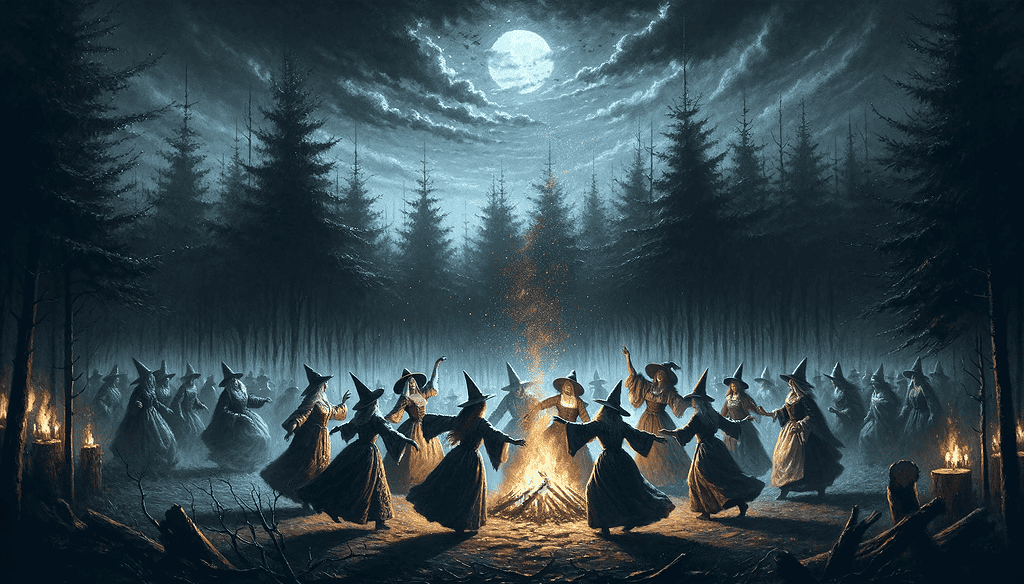
Cultural Transformation Over Centuries
The evolution of Walpurgis Night from a feared supernatural event to a celebrated cultural festival demonstrates the dynamic nature of folklore and tradition. As centuries passed, what was once a night of caution and warding off evil spirits gradually became an occasion for joy, celebrating the renewal that spring brings and the enduring power of community and folklore in shaping cultural identities. This historical journey not only enriches the celebration but also deepens the connection that modern-day enthusiasts of folklore and paganism feel towards this ancient tradition.
Witchcraft and the Harz Mountains – A Mythical Epicenter
The Harz Mountains, with their dense forests and misty peaks, have long stood as a central figure in the lore of German witchcraft, with Brocken Mountain rising as its most enigmatic symbol. This rugged terrain has been immortalized in countless tales of the supernatural, making it a core focus for those who seek the mystique of ancient European paganism and witchcraft.
The Brocken Spectre and Its Mystique
The Brocken Spectre is a fascinating optical phenomenon that occurs when a person’s shadow, cast by the sun onto mists or clouds, appears enormous and magnified, often surrounded by a luminous halo. This natural spectacle, particularly prevalent on the Brocken, the highest peak of the Harz Mountains, has fueled local myths and legends.
The eerie sight is often interpreted as a manifestation of spirits or supernatural entities, weaving it firmly into the tapestry of Walpurgis Night lore. The phenomenon’s contribution to local folklore is profound, enhancing the area’s reputation as a gathering place for phantoms and witches, especially on the eve of May.

Tales of the Night – Witches’ Sabbaths and Rituals
On Walpurgis Night, the Brocken becomes the legendary backdrop for the witches’ sabbath, where, as lore would have it, witches and otherworldly beings converge to celebrate the coming of spring. These gatherings are said to include dances around bonfires and rituals that culminate in meetings with the Devil himself.
Such vivid imagery not only underscores the night’s wild and untamed nature but also highlights the enduring fascination with the supernatural. These stories have been passed down through generations, evolving over time but always retaining the core elements of mystery and intrigue that attract modern-day enthusiasts of witchcraft and paganism.
In modern interpretations, these ancient tales continue to inspire a sense of awe and wonder, drawing visitors and spiritual seekers alike to the Harz Mountains to experience the lingering magic of Walpurgis Night firsthand.
As they explore these storied landscapes, the connection between the natural world and the mystical narratives of the past becomes a palpable, almost tangible experience. This enduring allure makes the Harz Mountains not just a physical location but a significant cultural and spiritual landmark for those enchanted by the mysteries of old European witchcraft.
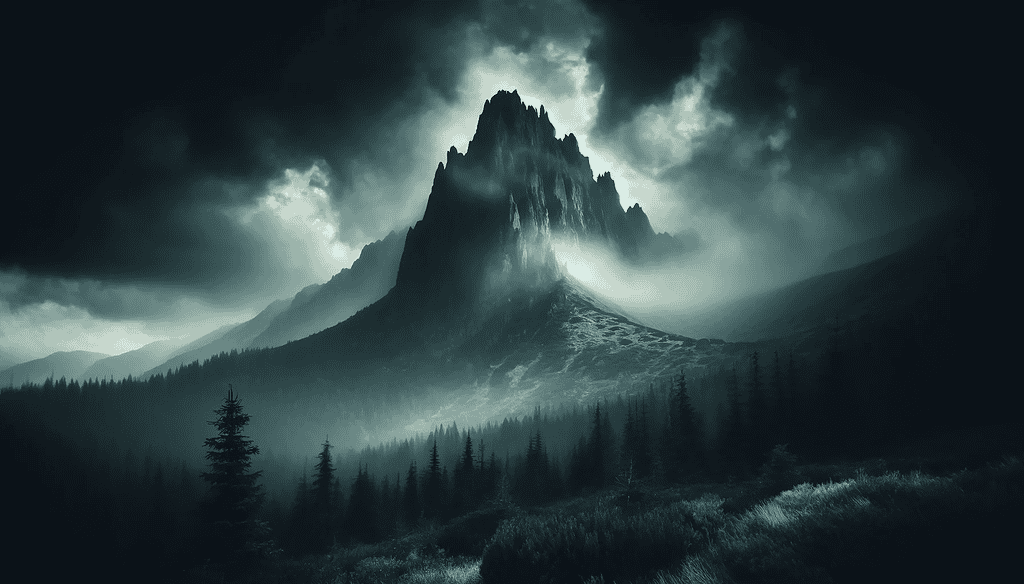
Cultural Significance and Modern Celebrations
Today, Walpurgis Night in Germany, particularly in the Harz region, transcends its origins as a night of fear and superstition, evolving into a vibrant cultural festival. This celebration now serves as both a significant tourist attraction and a vital part of Germany’s cultural heritage, drawing enthusiasts of folklore, witchcraft, and Norse paganism from across the world.
From Pagan Rituals to Tourist Festivals
Initially dreaded as a night filled with supernatural threats, Walpurgis Night has undergone a remarkable transformation. Today, it is celebrated with a series of community events, including traditional folk songs, dances, and of course, the iconic bonfires that light up the night sky.
These festivities not only preserve the historical essence of the celebration but also reinterpret it, making it accessible and enjoyable for modern audiences. Towns in the Harz Mountains host elaborate parades and costume parties, where locals and tourists alike can immerse themselves in the mystical aura of the past, now repackaged as part of an appealing cultural experience.
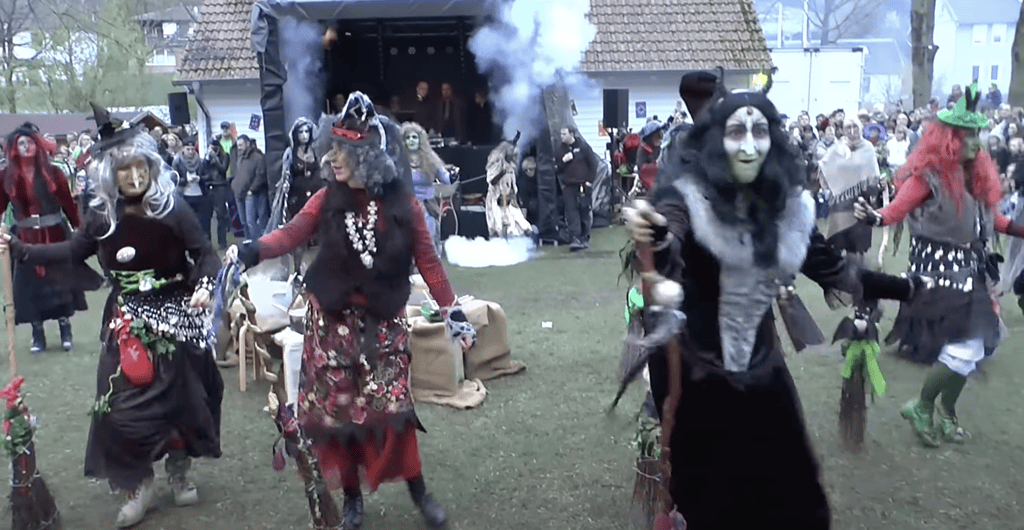
Comparing Walpurgis Night and Halloween
When comparing Walpurgis Night to Halloween, several parallels and distinctions emerge. Both events share roots in ancient festivals marking the change of seasons—Walpurgis Night heralds the coming of spring, while Halloween signals the onset of winter. Each has evolved from deeply spiritual and superstitious practices to more secular, community-focused celebrations involving costumes, stories of supernatural entities, and public gatherings.
However, while Halloween has largely taken on a more commercial and widespread appeal, particularly in the United States, Walpurgis Night remains closely tied to its regional origins and pagan traditions, retaining a unique cultural identity that emphasizes historical and local folklore rather than broader commercialization.
These observations highlight how Walpurgis Night, though it shares similarities with global celebrations like Halloween, maintains its distinct cultural significance by staying true to its historical and regional roots, thereby offering a deeper, more culturally rich experience to those fascinated by the mystique of old-world paganism and European witchcraft.
| Feature | Walpurgis Night | Halloween |
|---|---|---|
| Origin | Marks the eve of May; linked to Saint Walpurga. | Rooted in ancient Celtic festival Samhain. |
| Cultural Significance | Celebrates the coming of spring and fertility. | Marks the end of harvest and the onset of winter. |
| Key Symbols | Bonfires, witches, Brocken spectre. | Jack-o’-lanterns, ghosts, witches. |
| Activities | Dancing around bonfires, witch-themed festivals. | Trick-or-treating, costume parties. |
| Geographic Significance | Particularly celebrated in the Harz Mountains, Germany. | Widely celebrated in the United States and parts of Europe. |
| Spiritual Connection | Strong ties to pagan beliefs and local German folklore. | Incorporates both pagan and Christian elements. |
| Modern Celebrations | Cultural festivals, tourist attractions in Harz. | Commercialized with widespread community events. |
| Date of Celebration | Night of April 30th to May 1st. | October 31st. |
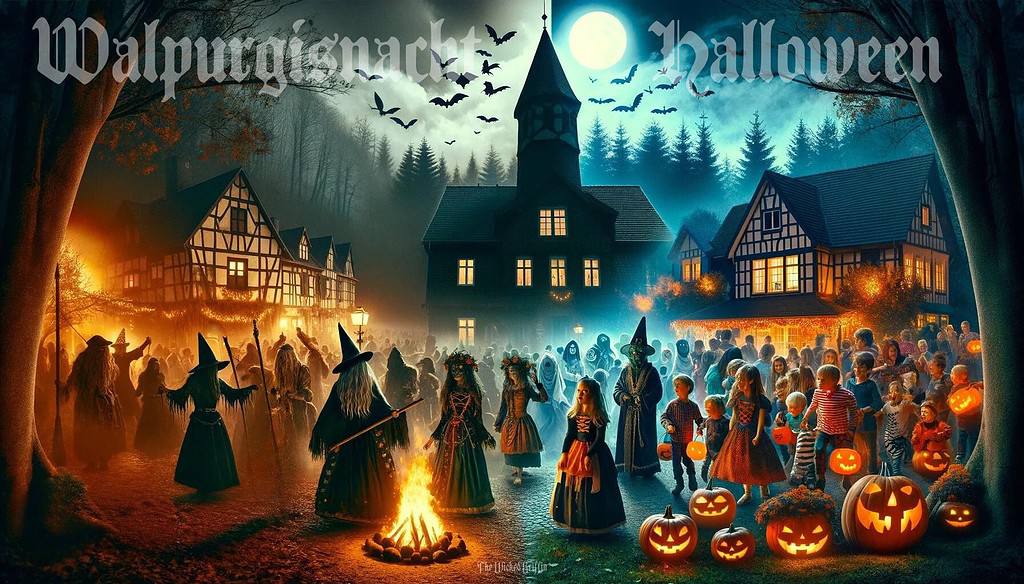
The Legacy and Continued Allure of Walpurgis Night
Walpurgis Night, with its enigmatic origins and vivid folklore, continues to fascinate and draw people into its mystical realm. Its transformation from a night feared for its supernatural associations to a festive celebration reflects its adaptability and enduring appeal. This ancient event remains deeply rooted in the cultural fabric of regions like the Harz Mountains, where the historical and the supernatural seamlessly merge.
Today, Walpurgis Night not only captivates those interested in witchcraft and paganism but also serves as a reminder to the power of cultural heritage to withstand the test of time. Through its ongoing celebration, Walpurgis Night maintains its place as both a historical artifact and a living festival, continuously enchanting a new generation with its lore and legacy.
